Discover 8 hidden attractions, cool sights, and unusual things to do in Palembang (Indonesia). Don't miss out on these must-see attractions: Museum Sultan Mahmud Badaruddin II, Sriwijaya Kingdom Archaeological Park, and Ampera Bridge. Also, be sure to include Palembang Water Tower in your itinerary.
Below, you can find the list of the most amazing places you should visit in Palembang (South Sumatra).
Table of Contents
Museum Sultan Mahmud Badaruddin II
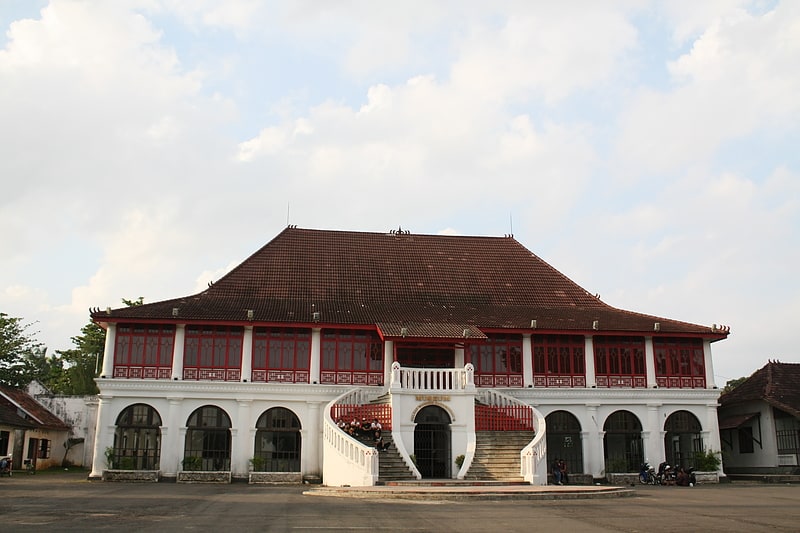
Museum in Palembang, Indonesia. Sultan Mahmud Badaruddin II Museum is a municipal museum in Palembang, Indonesia. The museum is established inside a 19th-century building former of the office of the colonial resident of South Sumatra. The building also houses the tourist department of Palembang.[1]
Address: Palembang, Jl. Sultan Mahmud Badarudin, 19 Ilir, Bukit Kecil
Sriwijaya Kingdom Archaeological Park
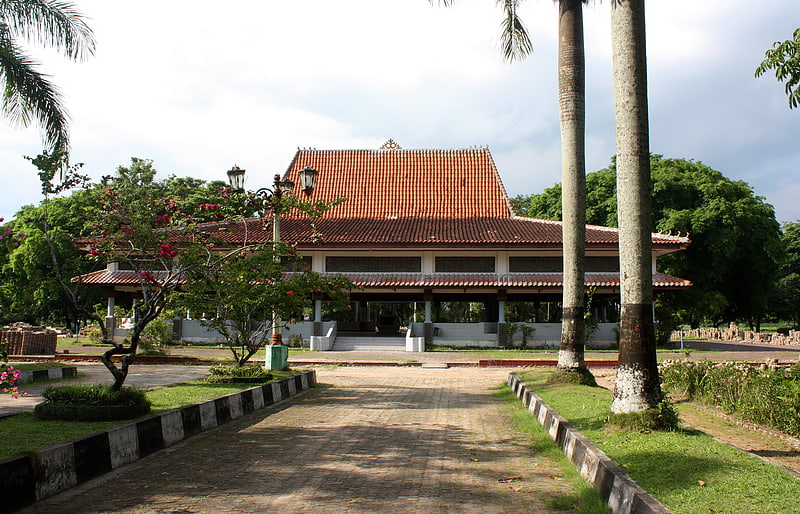
Srivijaya archaeological park, formerly known as Karanganyar archaeological site, is the ancient remnants of a garden and habitation area near the northern bank of Musi river within Palembang vicinity, South Sumatra, Indonesia. Remnants of ancient man-made canals, moats, ponds and artificial islands discovered in this area suggests the site was related with a 9th-century settlement related to the Srivijaya empire. Several artifacts, such as Buddhist statues, beads, pottery and Chinese ceramics were found in this area, confirming the area was once a dense human habitation.[2]
Ampera Bridge
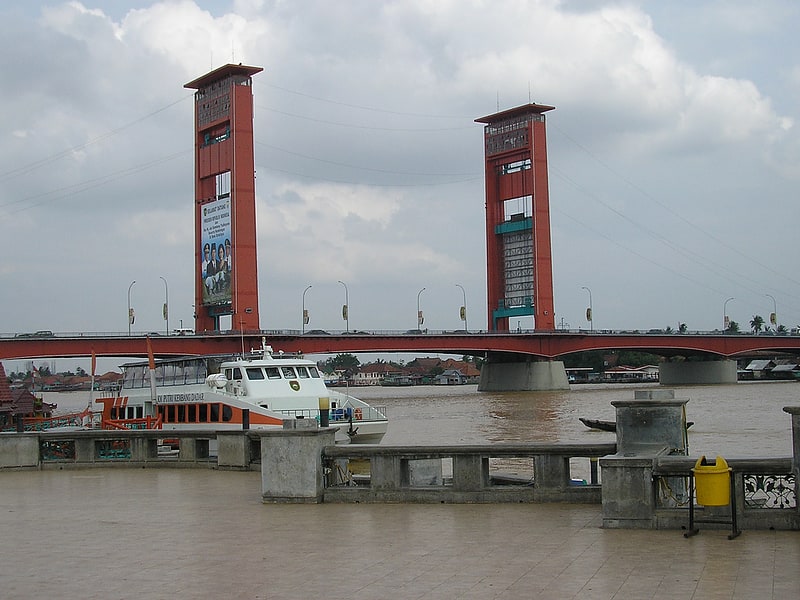
Also known as: Jembatan Ampera
Vertical-lift bridge in Palembang, Indonesia. Ampera Bridge, formerly Bung Karno Bridge between its opening and the 1966 De-Sukarnoization campaign, is a vertical-lift bridge in the city of Palembang, South Sumatra, Indonesia. It connects Seberang Ulu and Seberang Ilir, two regions of Palembang. It can no longer be opened to allow ships to pass.
The bridge was planned during the era of Indonesia's first president, Sukarno, who wanted a bridge that could open and be a match for London's Tower Bridge. The funds for the construction came from Japanese war reparations, with Fuji Heavy Industries being given responsibility for design and construction. However, at the time, Japan had no bridges of this type, and Fuji Heavy Industries had no bridge-building experience. The official opening was carried out by Governor of South Sumatra, Abujazid Bustomi, on 10 November 1965. At first, the bridge was known as the Bung Karno Bridge, after the president, but following his fall, it was renamed the Ampera Bridge.
For a few years after it was opened, the centre span could be lifted at a speed of approximately 10 metres per minute to allow ships of up to 44.5m in height to pass underneath. However, this only occurred a few times, and after 1970 it could no longer be opened. The official reason for this was that the 30 minutes needed to raise the bridge was causing unacceptable delays, and that in any case silting of the river had made it impassable for large ships. However, according to architect Wiratman, who acted as a consultant before the construction, the design of the bridge was flawed from the outset because of the soft mud on which it was built. He maintains that his concerns were ignored for political reasons, and that as the towers' foundations shifted, the bridge deformed to the extent that it could no longer be opened. The ballast weights needed to balance the weight of the bridge were removed in 1990 to prevent possible accidents were they to fall.
The bridge's colour has been changed three times. At first it was grey, but it was changed to be yellow in 1992. And in 2002, when Indonesia was led by Megawati Sukarnoputri as president, the colour was changed again to red.[3]
Address: Jalan Jenderal Sudirman, 30142 Palembang
Palembang Water Tower
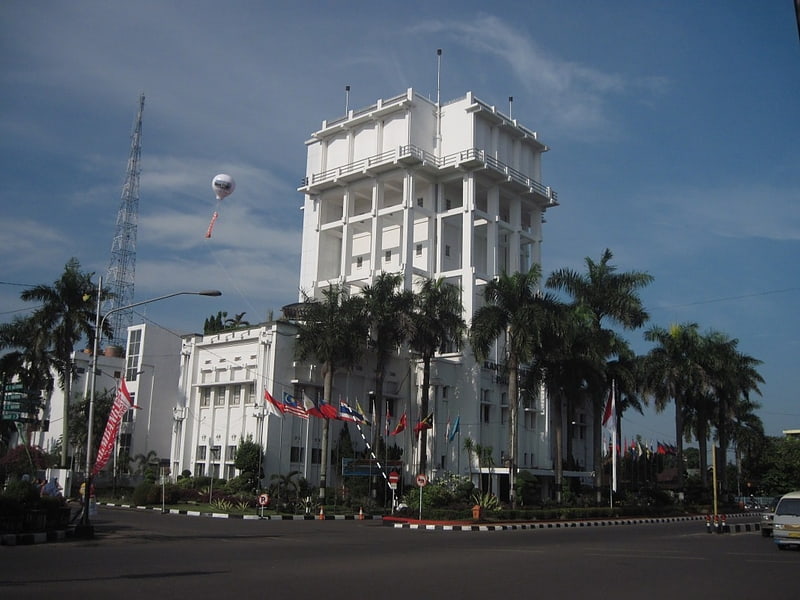
The Palembang Mayoral Office, also known as Kantor Ledeng, is an office building in Palembang, South Sumatra, Indonesia, which is used as the seat of the municipal government of the city. It was built as a water tower with an office for the colonial government on the lower floors by the Dutch, and was later also used by Japanese authorities during the Japanese occupation of the city.[4]
Address: Jl. Merdeka No.1 Kota Palembang, Palembang
Bukit Seguntang
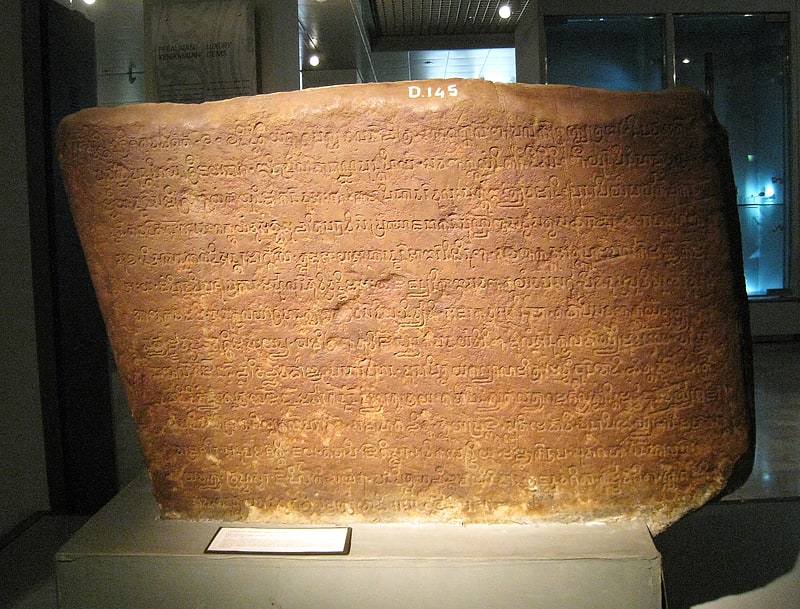
Historical landmark in Palembang, Indonesia. Bukit Seguntang or Bukit Siguntang is a 29–30 metres high small hill located at the northern bank of Musi River and within the vicinity of Palembang, capital city of South Sumatra, Indonesia. It is located around 3 kilometres north from Musi River northern bank and around four kilometres southwest from Palembang city center. The place is considered sacred by the locals and home of many archeological relics believed to be related to Srivijaya Empire, once a dominating political power around Malacca Strait. Today the hill gain status as an archaeological park.
In 1920s, a Buddha statue was discovered in this hill. It was discovered in pieces, the head part was discovered first, several months later the body parts were discovered, however the leg part is still missing.
The 277 cm tall statue was made from granite stone commonly found in neighboring Bangka Island. The statue followed the Amaravati style that flourished in Southern India around 2nd to 5th century CE. The style was adopted during Srivijaya era, and its origin was estimated circa 7th—8th century CE. Today it is displayed in Sultan Mahmud Badaruddin II Museum, near Kuto Besak fort.
In Seguntang Hill area also found fragments of Boddhisattva statue, a ruin of stupa made of sandstone and brick, fragment of inscription, stone statue of Boddhisattva, statue of Kuwera, and a statue of Buddha Vairocana in seated position complete with prabha (halo aura) and chattra (umbrella). The fragment of inscription is called Bukit Siguntang Inscription, mentioned about a great battle that shed a lot of blood upon Bhumi Srivijaya which means the Srivijayan Land. The inscription also mentioned about a curse for those who had done evil deed.
In the southern side of the hill lays Karanganyar site, where sherds from Tang and early Sung dynasties were found. Two stone inscriptions dated back to seventh century AD were found in its vicinity in 1920s.[5]
Masjid Agung Palembang
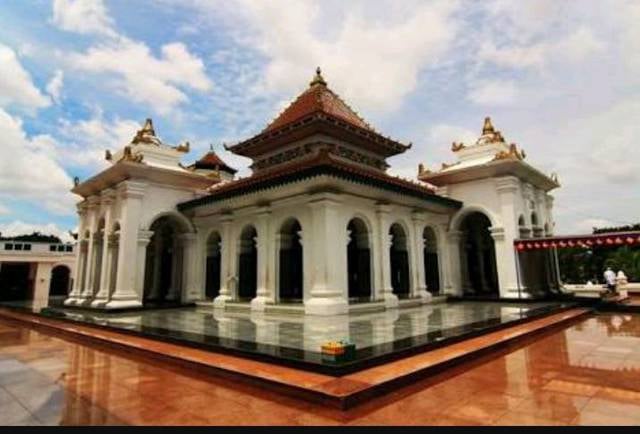
Mosque
Address: Jl. Jenderal Sudirman, 30111 Kota Palembang
Benteng Kuto Besak

Fortress in Palembang, Indonesia. Kuto Besak, also Benteng Kuto Besak is an 18th-century kraton in Palembang, South Sumatra. Kuto Besak was the center of the Sultanate of Palembang before its abolition by the Dutch colonial government. The fort was constructed in 1780 and took seventeen years to complete. Kuto Besak was inaugurated in 1797, marked by the transfer of the royal residence from the older Kuto Lamo to Kuto Besak.[6]
Address: Jl. Sultan Mahmud Badarudin, 30113 Palembang
Balaputradeva Museum

Also known as: Museum Balaputera Dewa
Museum. Balaputradeva Museum, officially the State Museum of South Sumatra Province "Balaputradeva", is an ethnographic museum located in Southern Sumatra's capital Palembang. The museum is the state museum of the Province of South Sumatra. The name Balaputradeva is derived from Balaputra, a 9th century sovereign of Srivijaya kingdom and the former head of the Sailendra dynasty whose main center was located in the vicinity of Palembang. Balaputradeva Museum displays the history and traditions of the province of South Sumatra.[7]